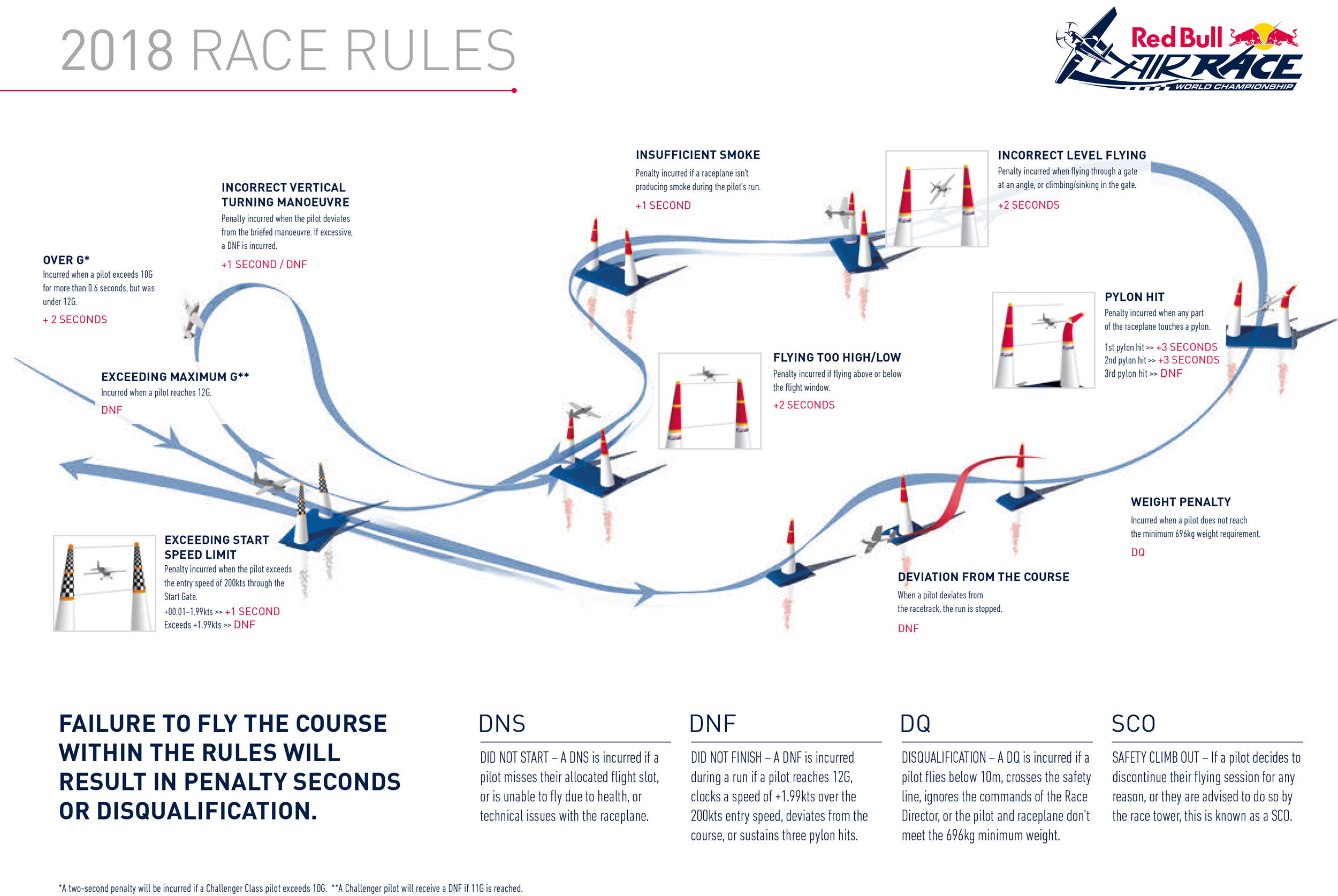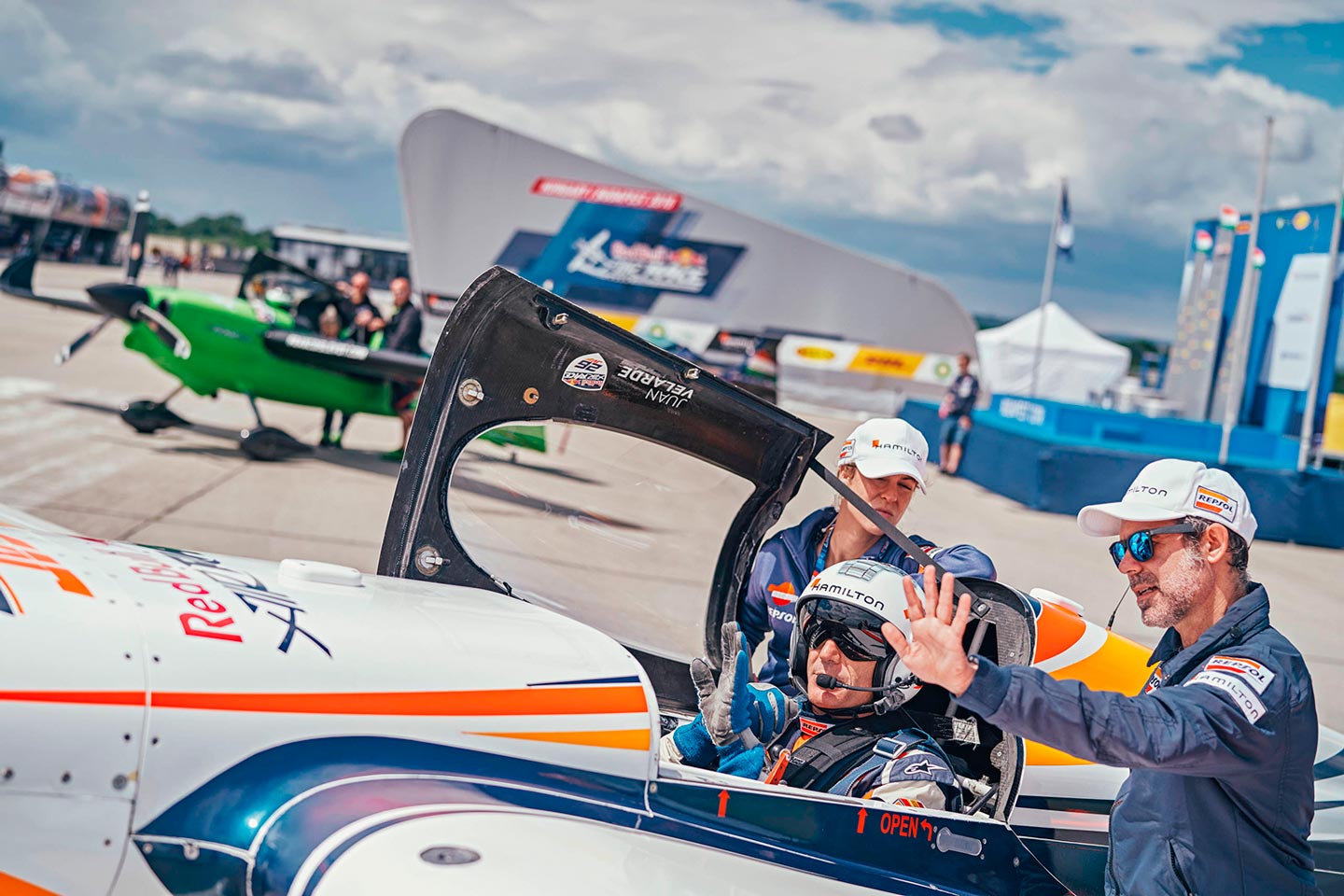It goes without saying that the judges of the Red Bull Air Race do not like to impose penalties on the pilots, but it’s something they have to do to ensure the rules are followed down to the last letter. The most common penalties add extra seconds on to the pilot’s lap time, similar to those seen in MotoGP, although certain violations can lead to a DNF (Did Not Finish) or a disqualification (DQ). During the race everything happens very quickly.
The race track normally takes approximately one minute to complete and the plane can pass through a pylon or gate every four or five seconds, so these decisions are made at lightning speed.
In order to judge these incredibly fast raceplanes, the organisation has a team of judges and a complex system including onboard sensors and an extensive network of cameras. The sensors interact with the EFIS (Electronic Flight Instrument System), which is responsible for transmitting all of the aircraft’s parameters to both the pilot and the control tower.
Thanks to this system the angle, speed, g-force, and engine status of the raceplane are recorded at all times when racing through the track. This data is collected on the PRU (Position Reporting Unit), a control system that measures around 40 parameters one thousand times per second. In addition to all the information about the engine, the PRU has accelerometers, gyroscopes, and GPS data that is transmitted in real time. All this data is transmitted in real time to allow us to know exactly where the plane is and what position it is in.


Once the data and the video signals (including high speed cameras) have been collected, the position of the plane in relation to the pylons can be calculated and penalties can be applied if rules are deemed to be broken.
‘Incorrect level flying’ and ‘climbing in the gate’ are violations adding two seconds to a pilot’s overall time. This is incurred if a pilot is not flying at the correct angle in relation to an Air Gate. When going through air gates, pilots must not be at an angle of more than 10° and they must not climb/sink in the gate.
In addition to the this, the height at which a pilot passes each pylon is imperative. Pilots must fly through Air Gates in the designated window which begins at 15m above ground.
This is the red part of the pylons and is judged by using the pilot’s head as a reference point. Failure to do this results in a ‘flying too high/low’ penalty, also adding 2 seconds to a pilot’s time.





Worse is the penalty for hitting a pylon, an error that is clearly visible as the fabric bursts upon even the slightest impact. The lightweight spinnaker fabric making up the sections of the pylon in the flight window weighs around 40% less than printer paper and bursts due to the difference in pressure outside of the pylon vs inside! If a ‘pylon hit’ occurs, the pilot will have a three-second penalty added for each pylon, or earn a DNF if they hit three.
The start gate is a critical moment in the race and is the only point in the entire racetrack where there is a speed limit. When pilots cross the start gate, the plane cannot exceed 200 knots (370 km/h). If they go above this speed there are two potential penalties: +1 second if the speed is between 201 and 201.99 knots, or a DNF if the speed is 202 knots or more.
Another aspect that is regulated is the number of G the raceplane must withstand. If a pilot exceeds 10G for more than 0.6 seconds, the pilot will receive a two-second penalty. If the pilot pulls 12G or more, a ‘Did Not Finish’ (DNF) is registered.





Planes must produce smoke when flying through the track. Right before they cross the start gate they receive a “smoke on” order from the Race Director. If they fail to produce smoke, a one-second penalty will be assigned for ‘insufficient smoke’. Finally, if the pilot deviates from the course and the GPS alerts that they have left the track, they will receive a ‘Did Not Finish’ penalty and their race will be over.
Regardless of the situation, the process of judging a violation starts in the timekeeping room of the Race Control Tower, where each movement of the plane is analysed. In the event that a potential infraction is detected, it is reported to the Head Judge, where the violation is confirmed.
The computer used for this purpose has several screens showing different shots of the plane and control panels that allows the Head Judge to assign potential penalties. The system is highly advanced and can identify violations and propose the corresponding penalties independently, but a human must give the final ‘OK’ in order to prevent any errors.
Technical rules, on the other hand, stipulate a number of penalties regarding aircraft mechanics that can disqualify a race team. Some of the most critical elements for this regulation include ensuring the weight of the raceplane reaches 696kg, and being diligent not to exceed the maximum revolution per minute (RPM) limit.
Now that the 11th season of the Red Bull Air Race enters its final two races, we hope that the judges don’t have to hand out too many penalties and that Juan Velarde and his team have a strong finish to the year.


 Join Us
Join Us  Join Us
Join Us 